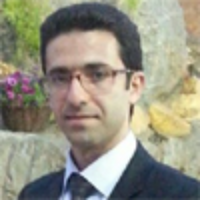Physical Therapy for Transverse Myelitis: A Case Report
Published on: 8th January, 2018
OCLC Number/Unique Identifier: 7869157183
Background and Purpose: Transverse myelitis (TM) is a rare neurological diagnosis found in 1-4 per million people. Rehabilitation is recommended secondary to steroid treatment. There is limited clinical research on physical therapy (PT) for TM. The purpose of this case report is to present PT examination and management strategies for a patient with TM.
Case Description: A 25-year-old female patient diagnosed with TM was referred to PT. She presented foot drop causing ataxic gait, decreased sensation in bilateral lower extremities, significant fatigue, and low back pain. The patient required significant rest time between all tests and measures due to severely increased fatigue. PT plan of care was focused on therapeutic exercises per patient tolerance, passive range of motion (ROM) administered by the therapist, and gait training when activity tolerance was increased.
Outcomes: The patient was able to tolerate bouts of exercise as prescribed through home exercise program. She responded very well to passive ROM treatment during breaks between exercises to maintain ROM and decrease rigidity. Active ROM exercise was used to build activity tolerance while being mindful of limited ability due to fatigue. Upon increased activity tolerance, the patient was able to tolerate gait training with multiple breaks and maintain corrected gait when addressed during treatment.
Discussion: PT intervention was helpful for this patient with TM. Breaking down functional activities based on patient tolerance is important when treating people with TM. More experimental research is needed to support the benefits of PT for TM.
Functional Electrical Stimulation (FES): Clinical successes and failures to date
Published on: 2nd November, 2018
OCLC Number/Unique Identifier: 7929240992
Non-invasive electrical stimulation in the form of neuromuscular electrical stimulation (NMES) and functional electrical stimulation (FES) has been documented as an optional assessment and treatment technology for decades. In contrast, translation of the robust clinical evidence supporting the effectiveness of FES’ enhancement of muscle force generation and adding to the recovery of motor control following damage to the brain appears limited. Furthermore, enabling many patients to regain locomotion ability though utilization of FES as a standard care option in rehabilitation medicine remains unmet. This perspective evolved over years of collaborative experience in clinical research, teaching, and patient care having a common goal of advancing patients’ rehabilitation outcomes. The clinical successes are supported by repeated evidence of FES utilization across the life span, from toddlers to elders, from hospitals’ critical care units to the home environment. The utilization include managing multiple deficits associated with the musculo-skeletal, neurological, cardio-pulmonary, or peripheral vascular systems. These successes were achieved in no small part because of the technological advancement leading to today’s wearable wireless FES systems that are being used throughout the continuum of rehabilitation care. However, failures to benefit from FES utilization are likewise numerous, collectively depriving most patients from using the technology to maximize their rehabilitation gains. The most critical failures are both clinical and technological. Whereas numerous barriers to NMES and FES utilization have been published, the focus of this perspective is on barriers not considered to date.
The Essential Role of Esophagogastroduodenoscopy Prior to bariatric surgery
Published on: 20th June, 2018
OCLC Number/Unique Identifier: 7814987530
We read with interest the case report entitled “Dieulafoy’s Lesion related massive Intraoperative Gastrointestinal Bleeding during Single Anastomosis Gastric Bypass necessitating total Gastrectomy: A Case Report” published in Archives of Surgery and Clinical Research b Ashraf Imam et al. [1]. We appreciate the authors for managing such a complicated case and for sharing their experience but, we have some conflict about the management, and we wanted to add some comments regarding the importance of EGD before bariatric surgery.
In the published case, no preoperative EGD was done and the authors mentioned that Dieulafoy’s Lesion is very unlikely to be diagnosed in the routine endoscopy. We agree with that statement but, it is not a good reason to eliminate this diagnostic modality before surgery. Though controversial, there is growing evidence which supports the importance of routine EGD prior to obesity surgery [2]. This may alter the surgical or medical plan for the obese patient, Furthermore, we have a different opinion about this patient’s management and, we wanted to share this with the authors.
In the reported patient, after control of the bleeding during gastrojejunal anastomosis, the OAGB(One Anastomosis Gastric Bypass) concluded successfully but, the patient was re-intubated because of severe bloody emesis at the recovery room and then an arterial bleeding point in the posterior wall of the lesser curvature close to the esophagogastric junction was found. This does not illustrate the reason for the huge gastric remnant seen at the laparoscopy because it was at least 200 cm far from the pouch and backwards flow of blood is very unlikely. Our opinion is, due to 90% diagnostic rate and about 75-100% success in hemostasis, on-table EGD should have a more highlighted role in treatment of the reported case [3].
Even if the pouch was dilated, it was not rational to perform a total gastrectomy in such an unstable patient and a laparoscopic pouch resection followed by Roux- en-y esophagojejunostomy could be a better choice in our point of view. Moreover, Feeding gastrostomy could be a better option rather than feeding jejunostomy, if needed.
In summary the essential role of endoscoy for screening the patients before bariatric surgery and, for the management of complications (though controversial), should always be kept in mind by bariatric surgeons.
Dead sea salt solution: composition, lack of cytotoxicity and in vitro efficacy against oral leukotoxins, endotoxins and glucan sucrose
Published on: 23rd July, 2022
OCLC Number/Unique Identifier: 9575227065
Introduction: Dead Sea Salt, rich in minerals and ionic compositions and low in Sodium Chloride (NaCl) has many reported unique properties that set it apart from other salts. Objectives: To evaluate the composition of Dead Sea Salt and assess its in vitro cytotoxicity, and efficacy against oral bacterial leukotoxins, oral endotoxins and oral glucan sucrase. Methods: The cytotoxicity was evaluated in an established cell line (solution at 5000 µg/mL of culture medium) using positive and negative control groups. The effect on oral bacterial leukotoxin (LtxA) and different concentrations of lipopolysaccharide and glucan sucrase was established at 24, 36, 48, 60, 72, 84, and 96 hours using the HPLC method (high-performance liquid chromatography). Results: The most predominant elements detected were the water of crystallization (H2O, water that is found in the crystalline framework of salt and which is not directly bonded ), magnesium chloride (MgCl2), potassium chloride (KCl), sodium chloride (NaCl), calcium chloride (CaCl2), bromide (Br -) and sulfates (SO4). In vitro, Dead Sea Salt presented no cytotoxicity and was highly effective against leukotoxin, endotoxin, and glucan sucrase enzyme. Conclusion and clinical significance: We believe that rinsing with Dead Sea Salt has the potential to contribute to the prevention of periodontal, peri-implant and dental disease and merits clinical research.
Is the informed consent form only a symbolic document in clinical trials?
Published on: 19th December, 2022
Being one of the basic principles of clinical research, informed consent is definitely a legal responsibility and ethical duty for health professionals.
Antioxidants and Pregnancy Complications: Exploring Therapeutic Strategies for Better Outcomes
Published on: 25th January, 2024
Pregnancy complications present significant challenges, impacting maternal health and fetal development. Oxidative stress, a key contributor to various pregnancy-related disorders such as preeclampsia, gestational diabetes mellitus (GDM), and preterm birth, has spurred interest in exploring antioxidant interventions. Antioxidants, known for their ability to counteract oxidative damage, have emerged as potential therapeutic agents to mitigate these complications. This paper synthesizes current knowledge on the role of antioxidants in pregnancy, elucidating their mechanisms of action, sources, and impact on oxidative stress-related complications. It examines diverse antioxidant compounds, including vitamins C and E, selenium, and natural phytochemicals, highlighting their potential to modulate oxidative stress pathways and promote maternal-fetal well-being. Furthermore, this paper critically analyzes clinical studies, meta-analyses, and preclinical research exploring the efficacy and safety of antioxidant supplementation during pregnancy. It discusses the complexities surrounding optimal dosages, timing, and formulations of antioxidants, aiming to delineate strategies for their integration into prenatal care. In conclusion, this review provides insights into the promising role of antioxidants as therapeutic strategies to alleviate pregnancy complications associated with oxidative stress. It highlights avenues for future research, advocating for a deeper understanding of antioxidant mechanisms and their optimal utilization in prenatal care to enhance maternal and fetal health outcomes.
Maximizing the Potential of Ketogenic Dieting as a Potent, Safe, Easy-to-Apply and Cost-Effective Anti-Cancer Therapy
Published on: 3rd March, 2025
The global menace of cancer requires supplementary treatments beyond standard medical approaches for effective medical intervention. The Ketogenic Diet (KD) composed of high fats combined with moderate proteins and low carbohydrates has become popular as a metabolic therapy for cancer. The anti-cancer mechanism of KD works through metabolic stress induction in cancer cells, reduced insulin and IGF-1 signaling pathways, improved mitochondrial function, inflammation, and immune regulation. Standard cancer treatments receive enhanced outcomes through KD synergistic action which simultaneously decreases treatment-related side effects. To achieve optimized treatment outcomes in cancer, ketogenic diet practitioners need to use personalized nutritional planning in combination with metabolic tracking and exogenous ketone supplements. It is essential to find solutions for diet adherence issues and nutrient deficiencies because they determine KD’s effectiveness as a cancer treatment. The fight against cancer needs sustained and multipronged clinical research and validation to establish the proper implementation of this method.




